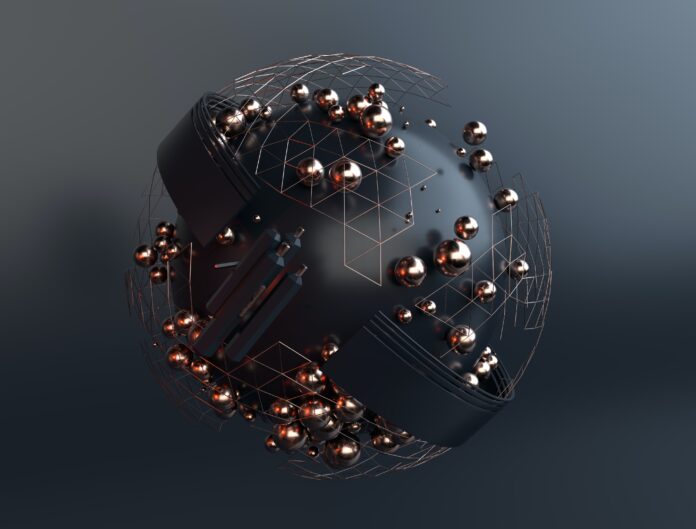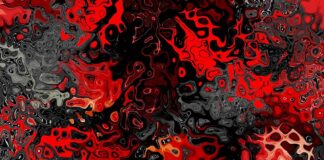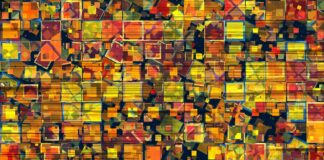Blenderkit is an innovative and powerful add-on for Blender, the popular open-source 3D modeling and animation software. It serves as a comprehensive online library that offers a wide range of high-quality 3D assets, materials, textures, and models. With Blenderkit, users can seamlessly access and integrate these assets into their Blender projects, saving time and enhancing their creative workflow. Now, let’s delve into five important aspects of Blenderkit that make it an indispensable tool for artists, designers, and animators.
1. Vast Library of Assets:
One of the standout features of Blenderkit is its extensive library of assets. It provides a vast collection of 3D models, materials, textures, and HDR images that users can effortlessly browse, search, and use in their projects. The library is regularly updated with new content, ensuring a constant stream of fresh resources. Whether you need a realistic character model, a detailed environment, or a unique material, Blenderkit offers a wide variety of options to choose from.
2. Easy Integration and Customization:
Blenderkit seamlessly integrates into the Blender interface, making it incredibly convenient to use. Once the add-on is installed, it becomes an integral part of the software, accessible through a dedicated tab. Users can quickly browse through the asset categories, preview items, and simply drag and drop them into their scene. Furthermore, Blenderkit allows for easy customization, enabling users to modify and adapt the assets to suit their specific requirements. This flexibility empowers artists to quickly iterate and experiment with different designs.
3. Intelligent Asset Management:
Blenderkit incorporates intelligent asset management features that streamline the asset selection process. Users can filter assets based on various criteria, such as category, tags, popularity, or file format. This functionality makes it effortless to find the right asset for a particular project. Moreover, Blenderkit includes a rating system where users can rate and review assets, helping the community identify the most valuable resources. This collaborative approach fosters an ecosystem of high-quality assets and encourages creators to contribute their best work.
4. Asset Synchronization and Versioning:
Blenderkit offers a unique feature that simplifies asset synchronization across multiple projects and devices. With the synchronization functionality, users can store their assets in the cloud and access them from any computer running Blender. This capability ensures that artists have their entire asset library available wherever they go, eliminating the need for manual file transfers. Furthermore, Blenderkit incorporates versioning, allowing users to access previous versions of assets, which is particularly useful for maintaining consistency in projects or reverting to earlier iterations if needed.
5. Integration with Cycles and Eevee:
Blenderkit seamlessly integrates with both the Cycles and Eevee rendering engines in Blender. Cycles, a powerful physically based renderer, and Eevee, a real-time rendering engine, provide users with different rendering options depending on their needs. Blenderkit ensures that assets from its library are compatible with these rendering engines, making it easy to achieve stunning visual results. Artists can effortlessly apply materials, textures, and lighting setups to their scenes, taking full advantage of Blender’s rendering capabilities.
Blenderkit is an invaluable resource for Blender users, offering a vast library of high-quality 3D assets, seamless integration into the software, intelligent asset management, synchronization and versioning capabilities, and integration with powerful rendering engines. With its diverse range of features, Blenderkit empowers artists, designers, and animators to enhance their creativity, streamline their workflow, and bring their ideas to life in the world of 3D. By providing an extensive collection of assets and fostering a collaborative community, Blenderkit continues to be a go-to tool for professionals and enthusiasts alike.
Blenderkit is a remarkable add-on for Blender, the widely used 3D modeling and animation software. It serves as an extensive online library that provides users with access to a vast array of high-quality 3D assets, materials, textures, and models. Blenderkit seamlessly integrates into Blender, enabling artists, designers, and animators to effortlessly browse, search, and utilize these resources directly within their projects. In this section, we will delve deeper into the various features and functionalities that make Blenderkit an indispensable tool for the Blender community.
One of the standout aspects of Blenderkit is its vast library of assets. It offers an extensive collection of 3D models, materials, textures, and HDR images, covering a wide range of categories and styles. Whether you are working on architectural visualization, character animation, product design, or any other 3D project, Blenderkit provides an abundance of resources to choose from. The library is regularly updated with new content, ensuring that users have access to the latest and most relevant assets. This constantly expanding collection empowers artists to unleash their creativity and find the perfect elements to enhance their projects.
Blenderkit provides a user-friendly interface within Blender, making it incredibly convenient to search for and integrate assets into your scenes. Once the add-on is installed, it becomes an integral part of the software, accessible through a dedicated tab. Users can effortlessly navigate through various asset categories, preview items, and seamlessly drag and drop them into their scenes. Blenderkit also offers powerful search functionality, allowing users to find assets based on keywords, tags, or specific criteria. This streamlined integration and search capability save valuable time and enable artists to focus on their creative vision.
In addition to the extensive asset library, Blenderkit incorporates intelligent asset management features. Users can filter assets based on different criteria such as category, tags, popularity, or file format. This functionality makes it effortless to find the right asset for a particular project. Moreover, Blenderkit includes a rating system where users can rate and review assets. This collaborative approach encourages the community to contribute their feedback and identify the most valuable resources. By utilizing the collective wisdom of Blender users, Blenderkit ensures that the library maintains a high standard of quality and relevance.
Blenderkit also facilitates easy customization of assets, allowing users to modify and adapt them to suit their specific requirements. Artists can tweak textures, materials, or models to achieve the desired look and feel of their projects. This flexibility encourages experimentation and empowers artists to create unique and personalized results. Blenderkit’s customization capabilities also extend to the integration of assets into scenes. Users can easily adjust the scale, rotation, and positioning of assets, ensuring seamless integration into the overall composition. Such versatility provides artists with the freedom to explore different design iterations and iterate on their ideas.
One of the notable features of Blenderkit is its asset synchronization and versioning functionality. With this feature, users can store their assets in the cloud and access them from any computer running Blender. The synchronization capability eliminates the need for manual file transfers, ensuring that artists have their entire asset library available wherever they go. It also simplifies collaboration by allowing multiple users to access and work with the same set of assets. Furthermore, Blenderkit incorporates versioning, enabling users to access previous versions of assets. This capability is particularly useful for maintaining consistency in projects or reverting to earlier iterations if needed.
Blenderkit seamlessly integrates with both the Cycles and Eevee rendering engines in Blender. Cycles is a powerful physically based renderer renowned for its accurate lighting and material simulation capabilities. Eevee, on the other hand, is a real-time rendering engine that provides interactive and fast rendering for tasks such as animation and game development. Blenderkit ensures that assets from its library are compatible with both rendering engines, allowing users to leverage the strengths of each engine to achieve stunning visual results. Artists can effortlessly apply materials, textures, and lighting setups from Blenderkit to their scenes, taking full advantage of Blender’s rendering capabilities. Whether users require photorealistic renders or real-time visualization, Blenderkit offers the necessary assets and integration to achieve their desired outcomes.
Blenderkit goes beyond providing a simple asset library. It fosters a vibrant and collaborative community of artists, designers, and animators. Users have the opportunity to contribute their own assets to the library, expanding its diversity and richness. By sharing their creations with the community, artists can gain exposure, receive feedback, and establish themselves as valuable contributors. Blenderkit serves as a platform for artists to showcase their skills and engage with a global community of fellow Blender enthusiasts. This community-driven approach not only enriches the asset library but also encourages the exchange of ideas, knowledge, and best practices among users.
To ensure a smooth user experience, Blenderkit offers various licensing options for the assets in its library. Artists can choose from different licensing models, including Creative Commons licenses and custom licenses, depending on their specific needs and project requirements. This flexibility allows users to use the assets in both personal and commercial projects, while respecting the rights of the original creators. Blenderkit also provides clear attribution guidelines, making it easy for users to credit the asset creators appropriately. By adhering to licensing standards, Blenderkit promotes ethical and legal use of the assets within the Blender community.
Blenderkit not only caters to individual artists but also extends its capabilities to teams and studios. It offers features for asset management and collaboration, enabling multiple users to work together on complex projects. Through asset synchronization and versioning, teams can ensure that everyone has access to the latest assets and maintain consistency across different workflows. Blenderkit facilitates a smooth collaboration process, streamlining the exchange of assets, materials, and models among team members. This capability is particularly valuable in professional settings where efficient collaboration and asset sharing are crucial.
Blenderkit continues to evolve and improve with regular updates and enhancements. The development team actively listens to user feedback and incorporates new features and improvements based on community input. This iterative approach ensures that Blenderkit remains responsive to the evolving needs of its user base. As Blender itself evolves and introduces new features, Blenderkit aligns with these advancements to provide seamless integration and support. This commitment to continuous development and improvement cements Blenderkit as a reliable and future-proof tool for the Blender community.
In summary, Blenderkit is a powerful and versatile add-on for Blender, offering a vast library of high-quality 3D assets, seamless integration, intelligent asset management, customization capabilities, asset synchronization and versioning, and integration with powerful rendering engines. Its extensive asset collection, coupled with user-friendly functionalities, enhances the creative workflow of artists, designers, and animators. By fostering a collaborative community and promoting ethical asset usage, Blenderkit encourages artistic growth and knowledge exchange. Whether for individual projects or team collaborations, Blenderkit provides the necessary tools to bring 3D creations to life within the Blender ecosystem.














